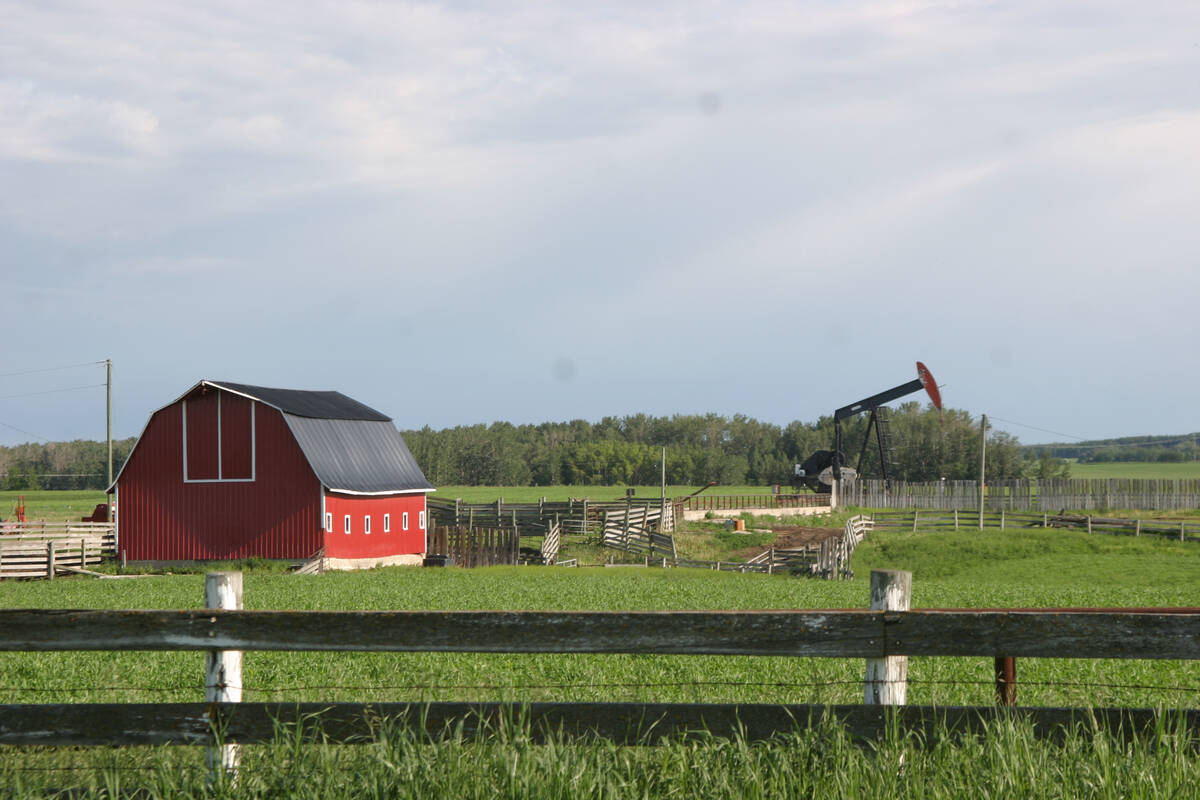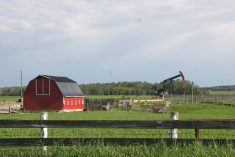It’s not easy growing fruit in the harsh climate of the Canadian Prairies, but many people want to, and Bob Bors wants to help them.
“We have a lot of people in the northern parts of the provinces interested in our breeding program,” the University of Saskatchewan plant breeder told attendees at the recent FarmTech conference in Edmonton.
One fruit attracting a lot of interest is haskap, said Bors, project lead of the university’s domestic fruit-breeding program.
Also known as blue honeysuckle, haskap is the closest thing to a northern blueberry and has a tart taste like raspberries. The university’s haskap collection contains Japanese, Russian, and Canadian varieties which grow in the northern, boreal forest.
Read Also

Recommendations in the mature assets strategy could cause potential problems for landholders
The Western Stock Growers’ Association urges producers to pay attention to the potential changes to Alberta’s Mature Assets Strategy.
“It’s a super-hardy plant, usually found on the edge of wetlands,” said Bors.
It’s also an early bloomer – all varieties bloom by the first of June – and so the first to ripen. Haskap plants, which grow from four to six feet high, tend to bear fruit in their second year, but need about four years before the bushes are big enough for a sizable harvest. Two varieties or more are needed to pollinate.
The favourite Canadian variety is Borealis, which produces a delicate fruit and does not do well when harvested with machinery. This plant is a good fit for home gardeners. Tundra is a good, slower-growing variety with disease resistance, good flavour and could work well in a commercial operation with harvest machinery. Both like to grow in areas with a higher pH.
Bors and other breeders are working with Japanese and Russian varieties, hoping to combine the favourable attributes of both. Japanese varieties tend to be rounder and larger, but do not ripen evenly. The Russian ones are longer, and skinnier, but do ripen evenly. The goal is to get a round berry that ripens uniformly and can be harvested mechanically.
The biggest pests and threats to haskap are cedar waxwings. They can be kept away from the haskap bushes by using wires.
Strawberry pointers
Bors also had some pointers for strawberry growers. Strawberries grown on the Prairies tend to be ready in June or July, but Bors cautioned people not to buy varieties called “ever-bearers,” which produce two crops a year. These plants are susceptible to viruses and do not taste good, he said.
Winterkill is another concern, but covering plants with straw, a common practice in many other regions of the world, isn’t always necessary, said Bors.
“Strawberries can get damaged if it gets to -15 C in the soil, deep down, because it will start ruining the roots,” he said. “If you have snow cover, you don’t have to worry. A lot of people on the Prairies don’t need to bother with the straw. But if you have a year that’s windy and it gets to -30, it’ll probably kill of most of your strawberries.”
Old mother strawberry plants do not produce as well after a couple of years, so producers might want to move on to newer plants.
“Don’t just keep them all in the same spot, shift it over another foot so you have new plants on newer ground,” Bors said.
Strawberries are also very particular about how deep they are planted.
“If you plant them a little bit deeper, they just stop growing and start dying,” he said.
Saskatoon berries are actually members of the pome family of fruits, which includes apples and pears. Almost all of the pests which attack apples will attack saskatoons, including fireblight and maggots.
“Saskatoons do have a tendency to bloom too early,” said Bors.
If the plants are placed on the north side of a fence, they don’t get as much sun and this can delay them from blooming for a few days, which might help them avoid a frost.
In a bad year, saskatoons need two or three fungicide applications a year. Saskatoons do not keep for long, and may need to be frozen once picked. Many of the varieties ripen unevenly. If plants are pruned and allowed to have more sunlight, this will allow them to ripen more evenly, said Bors. Saskatoon berries also have a large number of rhizomes and tend to spread.
“You don’t want to put it in a tight little spot in the garden because it will want to go many places,” he said. “You want to put it somewhere where you don’t mind if it spreads a little bit.”
Bors said Thiessen and Northline saskatoons are good varieties.
Dwarf sour cherries also grow well on the Prairies.
“These are not the same as a Bing cherry, these are the ones that are always processed, that you put in pies and jams and juices,” Bors said.
These sour cherries actually have a sweet taste, and are sometimes referred to as semi-sweet cherries. Sour cherries developed at the university are crosses of pure Mongolian cherry with Evans sour cherries and other varieties.
Another plus is that sour cherries do not need two varieties to pollinate. However, they are attractive to deer, who enjoy eating cherry wood.
“If you’re living on the edge of the woods, you’ve got to fence these things or you won’t have them,” Bors said.
He developed the Romance series of sour cherries, which includes Romeo, Juliet, Valentine, Crimson Passion, and Cupid varieties.
———
bob bors
“Wehavealotofpeople inthenorthernpartsof theprovincesinterested inourbreeding program.”















